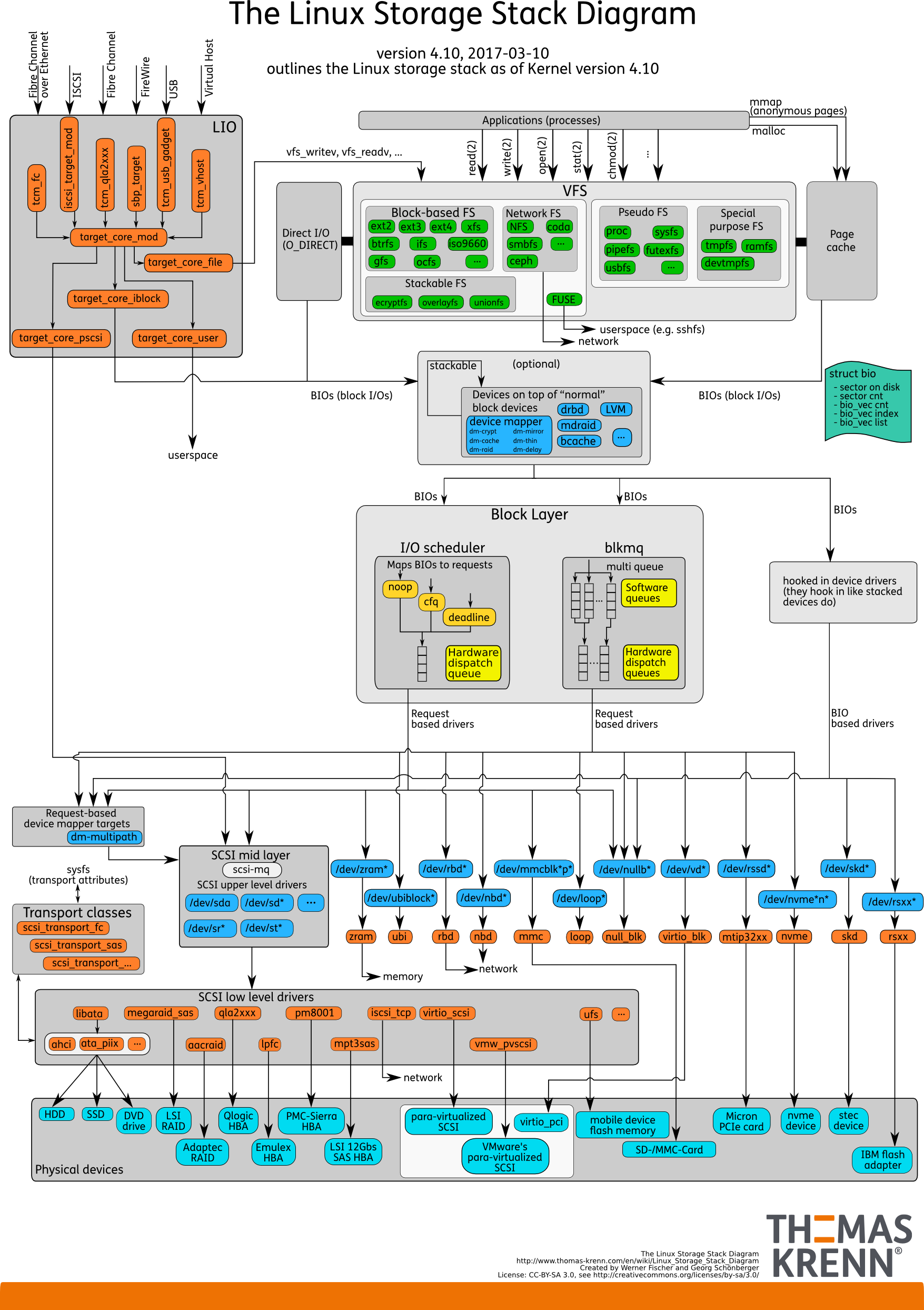Tests to ensure that tezedge is able to resume after a crash occurs, and the integrity of the database is not altered.
We are simulating crashes by saving the storage after every block IO request, at the block layer.
We then attempt to restart the node on top of the saved storage, and perform some integrity checks.
The tests are using dm-log-writes.
When an application write to the storage (with the syscalls write(2), chmod(2), fsync(2), etc), it translates
at the block layer to a sequence of requests: REQ_META, REQ_PREFLUSH, REQ_FUA, ..
We ensure that after every FUA requests, the database is in a valid state, and that Tezedge is able to restart with
that database.
We focus only on the request FUA (Force Unit Access), because attempting to read the storage after other requests leads to invalid file system.
A FUA request can be triggered from an application by calling fsync or fdatasync
This was tested in a VM with Ubuntu 22.04 and 2 additional partitions:
/dev/sdb2 GB/dev/sdc2 GB
Note: The first run of any of those tests will take a few hours to complete, because it needs to download all block headers on testnet.
Downloading the headers is required only once.
1 - Rust toolchain
2 - Tezedge dependencies:
sudo apt install openssl libssl-dev zlib1g pkg-config libsodium-dev clang libclang-dev llvm llvm-dev linux-kernel-headers libev-dev libhidapi-dev
This test applies 10 blocks from ithacanet
$ sudo ./run_test.sh tezedge
Result:
- 0 invalid context
- 81 valid context
After every FUA request, a valid context was found
This test applies 10 blocks from ithacanet
$ sudo ./run_test.sh irmin
Result:
- 0 invalid context
- 0 valid context
The test did not find any valid or invalid context.
This is because irmin doesn't call fsync/fdatasync
This tests the in-memory context.
While everything is in RAM, it periodically makes a snapshot on disk.
This test ensure that the snapshots are valid.
$ sudo ./run_test.sh tezedge-inmem
Result:
- 0 invalid context
- 14 valid context
$ sudo ./run_test.sh bootstrap
This will bootstrap the node on ithacanet.
After every FUA request, it will attempt to continue the bootstrapping process.
The tezedge node is always able to continue the bootstrapping and apply the next blocks
